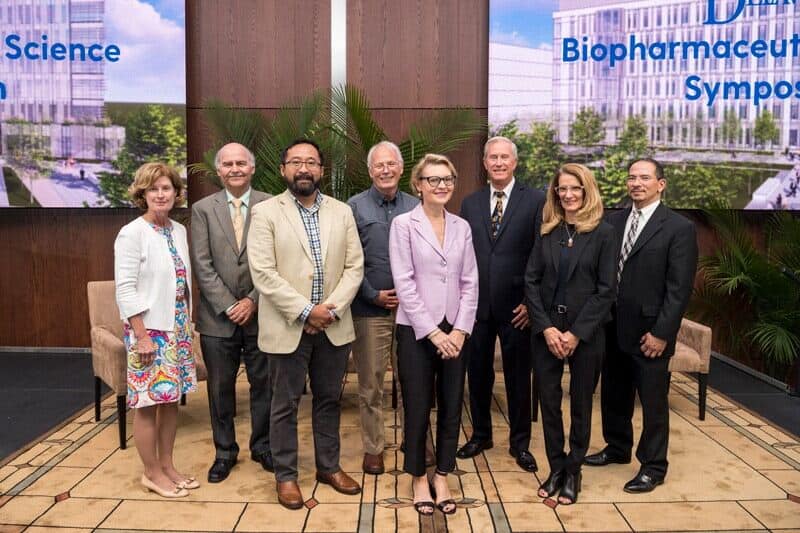RESEARCH
DISCOVERY
A Blog Devoted to UD Innovation, Excellence & Scholarship
COVID-19
Preventing COVID’s Spread On Campus
Norman Wagner, professor in UD’s College of Engineering, hopes the modeling effort, named Project Darien, will help students see the potential impacts of their actions and help inform health policymakers, while further advancing UD’s “Protect the Flock” campaign to prevent the spread of the coronavirus both on and off campus.
It’s a busy morning on campus and students are gathering at a crosswalk waiting for the traffic light to change. More than half have face masks on. What will happen to this group if one of the students who is not wearing a face mask is infected with the coronavirus (COVID-19)?
University campuses around the nation have been grappling with such scenarios and questions. To get answers, researchers from the University of Delaware are combining aerial observation with artificial intelligence to model how students are interacting with others on campus and in the surrounding community.
Norman Wagner, professor in UD’s College of Engineering, hopes the modeling effort, named Project Darien, will help students see the potential impacts of their actions and help inform health policymakers, while further advancing UD’s “Protect the Flock” campaign to prevent the spread of the coronavirus both on and off campus.
UD has experienced relatively low COVID-19 transmission rates compared to many of its peers during fall semester. A public dashboardprovides daily reports of campus cases. University officials hope to welcome more students back to campus for the spring 2021 semester.
“We want to provide new tools that will help develop strategies for mitigating and eventually eliminating the novel coronavirus, as well as future biological threats,” said Wagner, an internationally known scholar and inventor, who is the Unidel Robert L. Pigford Chair in Chemical and Biomolecular Engineering at UD and this year’s Alison Professor.
“Many of the models out there are very basic,” Wagner explained. “They may tell you how many people are getting sick. But they don’t tell you what people are actually doing, how they are interacting. Are they wearing face masks? Are they staying at least 6 feet apart? Our model aims to address that behavioral dimension.”
In the scenario where a crowd of students is waiting for the light to change at a crosswalk, a range of policy recommendations could arise if such locations proved to be transmission “hotspots,” Wagner said, from doubling down on wearing face masks by placing reminder signage in such locations, to staggering the start time for classes, or halting vehicular traffic temporarily during peak times, allowing people to keep moving through intersections.
Co-leading the project with Wagner are Antony Beris, Arthur B. Metzner Professor of Chemical and Biomolecular Engineering, an expert on the thermodynamics of flowing systems who previously has collaborated with Wagner in the development of sophisticated modeling tools, and Rick Suminski, associate professor of health, behavior and nutrition in the College of Health Sciences and director of the Center for Innovative Health Research.
The research is funded by the National Science Foundation through its Rapid Response Research (RAPID) program aimed at COVID-19.




